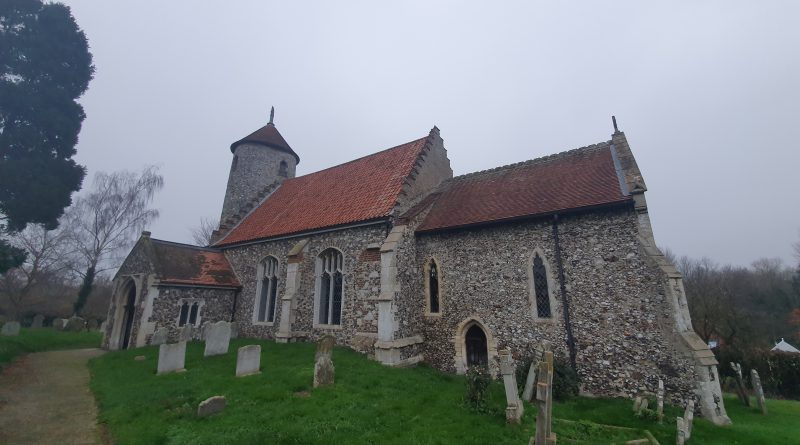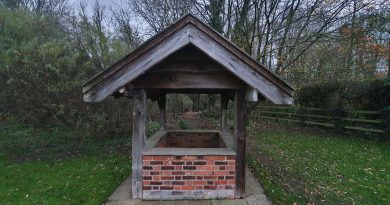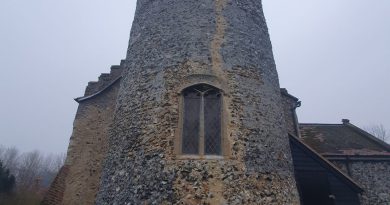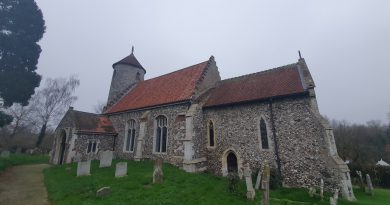Bawburgh – St Mary and St Walstan Church
This is the Grade I listed Church of St. Mary and St. Walstan at Bawburgh, one of the few churches which is dedicated to a Norfolk saint. The stepped nave gables give it a distinctive look and these date from 1633, when the building was repaired following some decades of decay.
There has been a church on this site since around the late tenth century, linked to the miracle of St. Walstan and the well. That well had ensured that the church had become a pilgrimage site and this brought some wealth, all suddenly brought to an end with the Dissolution of the Monasteries and the effective end of such pilgrimages. At one stage during the peak of its wealth, the church had seven Chantry priests and supported six canons.
The tower of the church dates from the twelfth century, with the chancel being from the beginning of the fourteenth century. The nave is late fifteenth century, likely having been rebuilt given the funds that had come in from the pilgrims.
This side of the churchyard drops down and the supporting buttresses are visible.
The ancient north door.
I have no idea how old this iron support is sticking out of the wall, but the bulging state of the north wall suggests there have long since been problems, even with the buttresses.
The chancel end of the church.
The bricked up doorway at the end of the chancel, the reasons for which I’m unsure of.
There doesn’t seem to have been any excessive repairs from the Victorians, with the Reverend Gabriel Young noting in the early twentieth century that there had recently been a desperate need to raise funds to fix the tower to prevent it from ruin.
The interior was closed, but apparently there are some notable wall paintings which the church hopes to have professionally restored over the next few years. In 1905, the local press reported that a handsome newly repaired wooden chancel screen had been installed in the church. The same report added that “the parish had the honour of furnishing the first couple who ever won the Dunmow Flitch in 1445”. This meant that a couple who could honestly say that they hadn’t had an argument in the first year of marriage were given a flitch of bacon.











